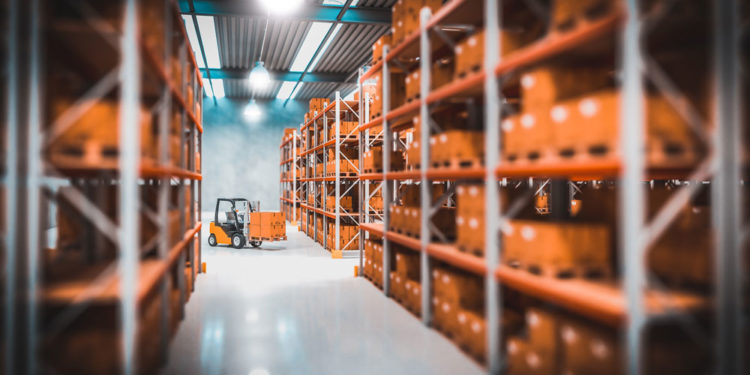Over the last ten years, the logistics environment of the UK has changed significantly due to rapid developments in e commerce and growing customer expectations for faster delivery.
More of these demands are now being met through local fulfilment centres. These small regional warehouses often operate with fewer resources and smaller budgets than their larger counterparts.
In these smaller operations, efficiency is critical. Unlike large automated facilities, smaller warehouses cannot afford frequent mistakes or delays, as they directly impact customer satisfaction and profitability.
While much of the logistics conversation focuses on software, tracking systems, and automation, the physical packaging handled daily also plays a crucial role in how efficiently a warehouse operates.
Standard packaging designs, particularly durable plastic pallet boxes, are becoming increasingly essential. They not only streamline handling but also support consistent routing, scanning, and inventory control.
In small-scale operations, where every square metre must be used efficiently, packaging decisions can be the difference between growth and stagnation.
Why Small Warehouses Matter in the UK Economy
According to Logistics UK, the number of small fulfilment centres under 50000 square feet rose by 23 percent between 2019 and 2024. This reflects the growing reliance of e commerce on regional distribution networks.
These facilities support major retailers, independent resellers, and third-party logistics services in meeting rapid delivery expectations without relying solely on centralised hubs.
With UK online retail growing at over 8 percent annually, the demand for regional distribution has surged. Standard 1200 by 800 millimetre footprint containers now integrate seamlessly with warehouse management systems and are compatible with most UK pallet racking systems, reducing implementation barriers for small and medium sized businesses.
Geolocation based fulfilment has also driven the need for localised storage, helping reduce delivery distances, costs, and carbon emissions.
Local warehouse efficiency is becoming a major competitive advantage for small and medium sized businesses, allowing them to compete with larger online sellers by offering faster and more responsive delivery.
These operations also demonstrate greater agility in inventory management, adapting quickly to seasonal shifts and changing demand. However, the strengths of small warehouses can also introduce unique operational challenges.
With average pick rates of 120 to 150 items per hour compared to over 200 in automated centres, space optimisation significantly impacts throughput. Poor storage layouts can cut capacity utilisation from an industry standard 85 percent down to just 60 percent.
Managing mixed SKU inventory across various product lines adds complexity, especially without consistent packaging policies.
Standardised packaging enables goods to be stacked and stored efficiently. Without it, inefficiencies and delays are almost inevitable. Industry analysts continue to highlight the strategic importance of these facilities in supporting the UK’s e commerce growth.
Standardisation Isn’t Just for Amazon
It is easy to assume that only multinational logistics centres benefit from standardised packaging, but the opposite is often true. Small warehouses may rely on it even more. Standardised containers, like plastic pallet boxes,ensure reliable stacking and space optimisation whether goods are in storage or in transit.
These containers, often measuring 1200 by 800 millimetres, are designed to work with existing barcode scanning systems and racking infrastructure used by most small and medium sized UK businesses.
This consistency translates into real results. Standardised packaging can reduce pick times by 12 to 18 percent and cut handling errors by up to 25 percent compared to operations using mixed packaging formats.
Warehouse staff can quickly and efficiently handle containers arranged in familiar formats on shelves, in delivery vehicles, or on pallet racks. This predictability speeds up loading, improves inventory accuracy, and reduces the risk of staff injury due to awkward manual handling.
Suppliers such as Alison Handling offer plastic pallet boxes that are compatible with modern logistics systems, including RFID tracking and modular racking. This allows small warehouses to access efficiency tools without investing heavily in specialised infrastructure, making it easier to scale without major capital expenditure.
Importantly, transitioning to standardised packaging is not cost-prohibitive. Plastic pallet boxes are durable and reusable, offering better long-term value than disposable or lightweight alternatives. Their longevity also means fewer disruptions to operations caused by damaged containers.
Reliable packaging formats reduce the need for constant replacements due to wear and damage, saving small and medium-sized businesses money over time.
In fact, businesses using reusable containers have reported packaging cost reductions of 15 to 30 percent within two years.
These containers also improve integration with delivery partners. Couriers and freight handlers expect standard pallet sizes and containers, reducing rejections, broken supply chains, or the need to repack items.
For entrepreneurial businesses using third party logistics services, this can significantly increase fulfilment efficiency and customer satisfaction. It builds consistency across the entire delivery journey, from warehouse dispatch to the final mile.
Plastic Pallet Boxes: Built for Movement, Not Just Storage
There is a common misconception that plastic pallet boxes are mainly for static storage. In reality, they are designed to support active movement throughout the supply chain, including frequent transfers between different zones within the same facility.
These containers are strong enough to withstand regular use during inbound and outbound operations, as well as internal material handling. They are engineered to endure repetitive loading, stacking, and transport cycles, even in demanding environments.
They resist water damage and hold up under repeated use. This makes them more reliable than cardboard or other single use packaging, which can degrade easily and often requires replacement after only a few handling cycles.
Since plastic pallet boxes are built to a standard size, they are compatible with common racking, pallet trucks, and forklifts. This makes it easier for warehouse teams to move goods without frequent operational adjustments, reducing downtime and improving process efficiency.
They are also highly stackable, allowing businesses to maximise vertical space. For warehouses with limited floor space, this capability is especially valuable. It enables better zoning, easier access to stock, and quicker turnaround times for fast moving items.
By improving storage density, companies can avoid the need for off-site storage facilities, which lowers operating costs. Recent analysis onUK warehouse trendsemphasises how efficient space utilisation has become essential for small‑scale fulfilment networks to remain competitive.
Reusable containers also support sustainability goals. Businesses are increasingly expected to demonstrate environmental responsibility. Durable materials help reduce packaging waste compared to single-use alternatives and align with environmental compliance standards.
Over time, reusability leads to financial savings. The money saved can be reinvested into other areas of business growth, such as digital tools or workforce development.
Common Problems in Small Logistics
Small warehouses can be under a great deal of pressure and have limited resources despite their significance, a common challenge faced in small business logistics operations. This setting exposes them to even greater inefficiencies brought upon by inconsistent packaging, especially during high-volume periods like seasonal peaks or promotional sales.
There are also unlabeled bins, which create common confusion and delay the process when staff are trying to find the stock. Without real time inventory visibility or clearly marked containers, even well trained teams can waste valuable minutes on simple tasks. Unless it has a well defined labelling system, even a relatively small backlog of items that were to be picked up will swiftly turn into late shipments and dissatisfied clients.
These problems are aggravated by the fact that products are not packaged in standardised sizes, which hinders the storage of the products in an orderly manner. Ill fitting containers are good space wasters and create the probability of losing or damaging goods. They also increase the risk of miscounts during stock checks or misloads during dispatch.
These inefficiencies often manifest as increased order processing times, ranging 15 to 25 percent above industry benchmarks, higher error rates, often over 2 percent compared to less than 1 percent in standardised setups, and reduced on-time delivery performance.
Another issue is the broken containers. Disposable packaging is light and may rip or get compacted during the object’s manipulation, resulting in damaged goods and labour to re-pack the items. Every instance of damage adds to the operational strain and increases the risk of customer returns.
In small-scale warehouses, where there is no such redundancy as in larger automated systems, any minor interference can significantly affect throughput. Adopting reusable warehouse packaging can resolve most of these issues.
Reusable containers have fewer chances of failure, and designing them with fixed sizes allows easy structuring of storage space by facilitating efficient designs. They also support better forecasting and slotting decisions.
Personnel can also be more productive without constant packaging interruptions, even without the use of complex programs. Fewer disruptions lead to a more focused workflow and consistent customer experience.
Final Overview
Small UK-based warehouses are under growing pressure to deliver quickly and reliably. Yet success is not determined solely by digital tools.
Packaging decisions play a significant role in how efficiently products move from receipt to dispatch. The right container format can prevent workflow disruptions, reduce staff fatigue, and allow leaner teams to maintain high output levels without sacrificing quality.
Standardised packaging formats, including plastic pallet boxes, help small businesses save space, reduce errors, and better integrate with delivery partners. This consistency improves communication with third-party couriers, minimises friction during loading and unloading, and allows for more accurate forecasting of delivery timelines.
These benefits increase agility and allow smaller warehouses to stay competitive in a decentralised logistics environment.
Standard packaging solutions may not attract the same attention as automation or artificial intelligence. However, they remain among the most practical and affordable strategies to improve operations and support long term success in the UK logistics sector.











































































